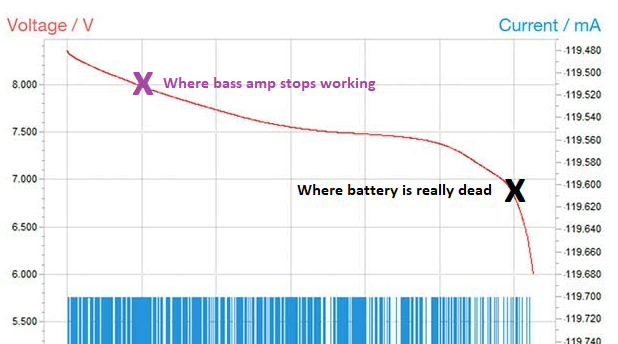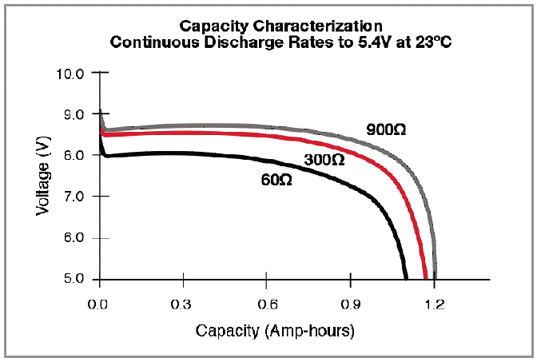Rechargeable batteries usually work better with systems where the power supply has a wide range of input for a fixed output.
Let’s say you have a power supply for 12V and it accepts a wide range of battery voltage like 6V-18V. This means the power supply circuit should regulate in a way to disperse the extra tension if Vin>Vout (by releasing heat) or pump up the tension if Vin<Vout (using switching circuits to charge and discharge capacitors…etc).
Li-ion batteries are designed to work with this kind of supplies and they have a longer curve of voltage drop during their life time.
Below is the consumption curve of the battery you have linked to.

However the amp circuits on a bass (as seen here on MK 1 ) do not seem to have this kind of power supply circuits that would condition (regulate) the tension to always have the most efficient power.
This might be due to noise and/or cost reduction but the result is when the Vin is lower than what the circuit is designed for, the signal starts getting cut off and eventually can’t be amplified anymore. I hypothesized what voltage that might be for this circuit I know of
Single use batteries however has a much flatter graph over time!

I am super new to the instrument world and did not have a chance to analyze many amp circuits on market but I have used a lot of different types of rechargeable batteries and ultra capacitors in a variety of standalone systems. I would love to see other inputs on that matter.
The batteries you linked to state that they are good for “e-guitars” maybe they would need less frequent recharging in respect to what @PamPurrs used before but still most probably you won’t be using the full capacity of this battery with your bass causing degradation over time because of the lower cells not getting refreshed by full discharge and recharge cycles.
Still I think it might be a good idea for eco sustainability…